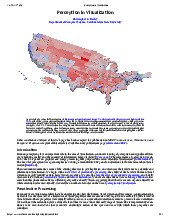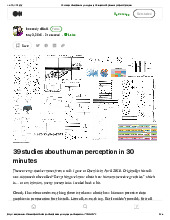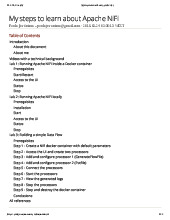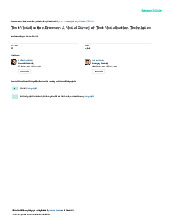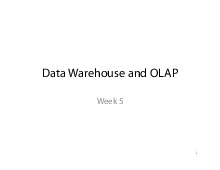



Preview text:
Programming, Data Management and Visualization Alexander Ahammer∗ β version
Last updated: Wednesday 2nd December, 2020
Please check this document regularly 1. GOALS
In this class you will learn advanced concepts in programming and data management using the
statistical software package Stata. We focus on Stata because almost all subsequent courses in
the econometrics curriculum use this software. However, note that many topics we cover are
highly relevant for any statistical programming suite, even though the commands and concepts
may differ slightly. However, Stata is not object-oriented as most other common languages, such
as R or Python, but rather procedural or function-oriented (which makes it also much easier
to learn). Upon successful completion, you are capable to handle Stata and understand data
management at a level required for the subsequent courses in the JKU econometrics curriculum.
We start by discussing how to set up projects, arrange codes, and how to work with functions,
macros, scalars, and matrices. Based on these preliminaries we will cover topics in data man-
agement (specifically how to combine, reorganize, and clean data), programming (e.g., how to
use loops), as well as data analysis and visualization. Interested students will be provided with
material teaching them to program an OLS estimator with Mata.
A specific emphasis is placed on econometrics and big data. Most examples and exercises will
be based on exemplary data from the Austrian Social Security Database. We will discuss several
particularities in handling big data sets throughout the course of the lecture. 2. PREREQUISITES
This class is held as a standard KS worth 4 ECTS. Ideally it should be taken in the first year
by all Economics or Management and Applied Economics students, indeed students from other
MSc programs and motivated BSc students are highly welcome as well. Economics PhD stu-
dents may be able to use this class for their generic competences, make sure to confirm this with
your advisor before registering.
Importantly, basic knowledge in econometrics and statistics at the level of Intermediate Econo-
metrics (formerly Econometrics I) is a prerequisite. If you don’t have prior knowledge in sta-
tistical programming, I advise you to invest time in learning Stata before the class starts. It is a
∗Department of Economics, Johannes Kepler University Linz, B alexander.ahammer@jku.at. I do not
offer regular office hours, if you require an appointment please contact me via email. 1
very intuitive language with a steep learning curve (especially if you know other programming languages). 3. CURRICULUM CHANGE
The introduction of this course came along with a change in the Master curriculum. For all
students who took at least one course in the module ‘Methods in Economics’ before October 1,
2018 this course is not compulsory. For all others it is. 4. TOPICS
This is a coarse list of all topics we will cover this semester. Topics may change as we go along.
If you are interested in additional contents (e.g., for your thesis), please let me know as soon as
possible — there may be time to cover them.
(A) Elementary concepts and data organization [slides]
How to set up and organize a project, replicability, data types, memory, importing and exporting data. (B) Programming preliminaries [slides]
Writing do-files efficiently using lists, logical qualifiers, strings, observation numbering;
functions, macros, scalars, and matrices; loops. (C) Data management [slides]
Data validation; reorganizing and combining datasets, useful data management com- mands. (D) Reporting results [slides]
Store, save, and reuse computed results; automate reporting of estimation output and
graphs, produce publication-ready tables with Stata.
(E) Data analysis and visualization [slides]
Summary statistics, cross-tabulations, graphs, geographical maps.
Don’t print the slides until right before the corresponding lecture, because they are updated
continuously. Each slide set has a time stamp for reference. 5. ORGANIZATION AND GRADING
Lectures are delivered in weekly meetings. Due to COVID, classes will be offered exclusively
online for now. Every two weeks, students have to solve a short problem set and send it in
via email to me. The class concludes with a take-home exam at the end of the semester. The
schedule can be found in Table 1. Please check this syllabus regularly, as links to slides and
other materials will be published here.
Grading follows the Austrian scholastic system, with 1 or Sehr Gut being the best and 5 or Nicht
Genügend being the worst and only failing grade. There are 5 weekly problem sets à 6 points,
amounting to a total of 30 points. The take-home final exam is worth 30 points too. In total you
can therefore reach 60 points, with at least 31 points required to pass the course (with 38 points
or more you get a ‘Befriedigend,’ 46 or more a ‘Gut,’ and 54 or more a ‘Sehr Gut’). 2
Table 1: Course schedule (will be updated regularly, check back here). W Date Time Venue Topic Slides Problem Sets 0 Mo, 05.10.2020 13:45–14:15 Zoom Introduction Intro 1 Mo, 12.10.2020 13:45–15:15 Zoom Module A [A] 2 Mo, 19.10.2020 13:45–15:15 Zoom Module A [A] PS1 3 Mo, 09.11.2020 13:45–15:15 Zoom Module B [B] 4 Mo, 16.11.2020 13:45–15:15 PS2 5 Mo, 23.11.2020 13:45–15:15 Zoom Module B [B] 6 Mo, 30.11.2020 13:45–15:15 PS3 7 Mo, 07.12.2020 13:45–15:15 Zoom Module C 8 Mo, 14.12.2020 13:45–15:15 Zoom Module D PS4 8 Mo, 11.01.2021 13:45–15:15 Zoom Module D 9 Mo, 18.01.2021 13:45–15:15 Zoom Module E PS5 10 Mo, 25.01.2021 13:45–15:15 Zoom Module E 6. TAKE-HOME EXAM
The take-home exam accounts for the other half of your grade. It will essentially be a longer
problem set; based on transforming, organizing, and analyzing real-world data. The exam
requires you to apply methods we have learned during the semester, but there will also be new
challenges you have not yet encountered, allowing you to demonstrate your acquired problem solving skills.
The take-home exam should be submitted in the form of a seminar paper, where you verbally
explain every piece of your code and interpret each table and graph you generate. There will
be more than one exam sheet, and you will be randomly assigned one of them. You will work
alone on your exam, cheating (especially copying from others) will be rigorously punished. I
reserve the right to invite students for an oral exam if there is reasonable suspicion of academic fraud.
The take-home exam will be uploaded on January 26, 2021 and is due March 1, 2021, mid- night sharp. 7. LITERATURE
The main reference for this class is my slide set. However, the structure is loosely based on
Christopher F. Baum (2009), ‘An Introduction to Stata Programming,’ first or sec-
ond edition, Stata Press, College Station, Texas.
In the future I may provide additional references for modules E (data analysis and visualization)
and F (programming an estimation command). A very interesting read is Code and Data for
the Social Sciences: A Practitioner’s Guide by Matthew Gentzkow and Jesse Shapiro (both
Chicago Booth), I recommend everybody who writes an empirical econ thesis or aspires a
career in academia to study this: [Link]
Check also these Stata cheat sheets, they are extremely helpful: [Link] 3 8. DATA DECLARATION
As a reminder, here is the data declaration you signed:
I, [your name], will receive different random samples drawn from the Austrian So-
cial Security Database and the Upper Austrian Health Insurance Fund Database
to solve exercises for the 2020/’21 Johannes Kepler University Linz class Pro-
gramming, Data Management and Visualization taught by Alexander Ahammer. I hereby declare, that I will
– not search for individual-level information in the data,
– delete the datasets immediately and completely after the end of the course, and
– make sure, that none of these data will be passed on to third parties.
I am aware that I am liable to prosecution if I violate any point of this declaration.
You can find all datasets in this password-protected Dropbox folder: [Link] 4
Document Outline
- Goals
- Prerequisites
- Curriculum change
- Topics
- Organization and Grading
- Take-home exam
- Literature
- Data declaration
